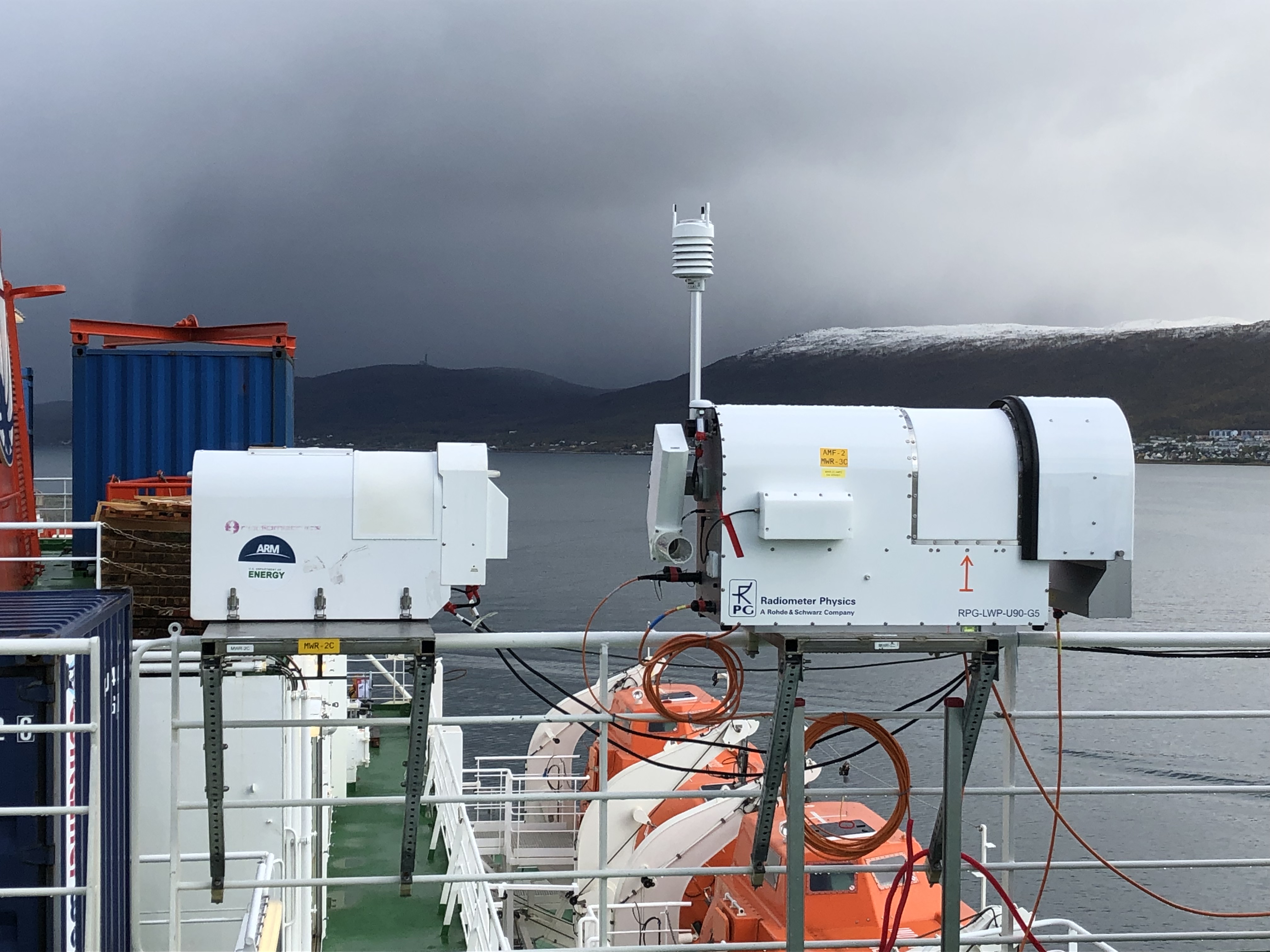Microwave Radiometer Retrieval Data Available for 3 ARM Campaigns
Published: 23 March 2021

The Microwave Radiometer Retrievals (MWRRET) value-added product (VAP) has been released for three recent Atmospheric Radiation Measurement (ARM) user facility field campaigns.
Data from the Cold-Air Outbreaks in the Marine Boundary Layer Experiment (COMBLE) are available for the full campaign duration—December 1, 2019, to June 1, 2020—near Andenes, Norway.
MWRRET has also been processed for the Macquarie Island Cloud and Radiation Experiment (MICRE) from December 10, 2016, to March 9, 2018, and the Multidisciplinary Drifting Observatory for the Study of Arctic Climate (MOSAiC) expedition from October 11, 2019, to July 31, 2020. However, MOSAiC data from May 15 to July 18 will be reprocessed soon to fill in a data gap from when the icebreaker R/V Polarstern was in transit. During that time, the Polarstern briefly left the ice floe to complete a crew and supply exchange off the coast of Svalbard, Norway. An update will be provided when the reprocessing is done.
The MWRRET VAP retrieves column precipitable water vapor and liquid water path from the 2-channel microwave radiometers using a physical retrieval methodology and bias correction that provides improved retrievals over the standard statistical coefficient method.
More information on MWRRET is available on the VAP web page.
Questions or comments about the data can be sent to ARM translator Damao Zhang.
Access the data in the ARM Data Center. (Go here to request an account to download the data.)
To cite the MWRRET data, please use doi:10.5439/1027369.
Keep up with the Atmospheric Observer
Updates on ARM news, events, and opportunities delivered to your inbox
ARM User Profile
ARM welcomes users from all institutions and nations. A free ARM user account is needed to access ARM data.


















